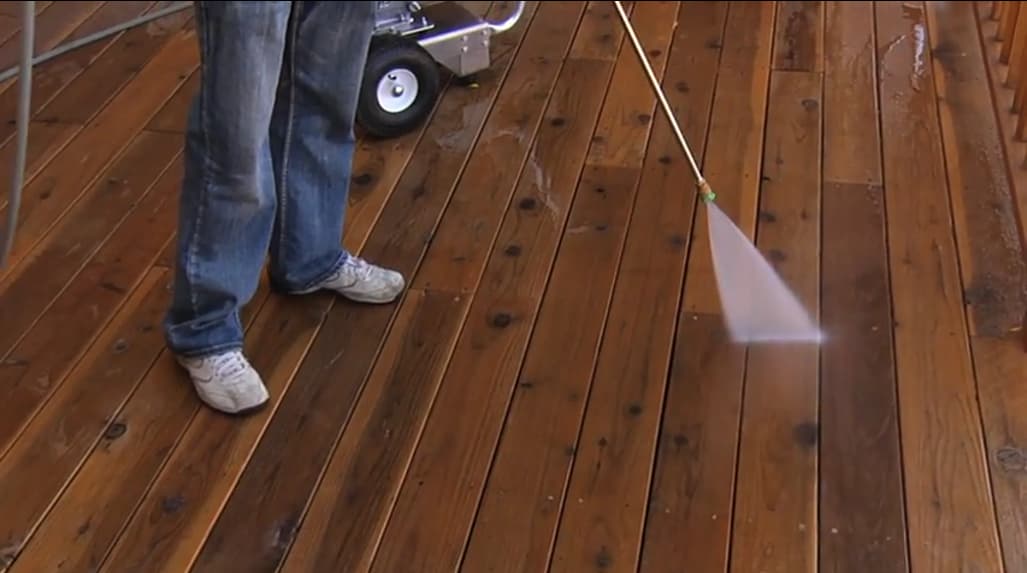
Wood decks, fences, and siding add warmth and beauty to a home—but keeping them clean is no small task. Enter the pressure washer: a fast and powerful solution to remove grime, mildew, and dirt. But if your wood has been stained or sealed, you might be wondering… can pressure washing strip it all away?
The short answer is: yes, it can—and sometimes that’s exactly what you want. Other times, it can be a costly mistake. Let’s break it down so you know when pressure washing is safe, when it’s risky, and how to do it right if you’re working with stained or sealed wood. 🧼🪵
🧪 What’s the Difference Between Stain and Sealant?
Before diving in, it’s helpful to understand what you’re working with:
- Wood stain adds color and penetrates the surface to protect against UV rays and weathering.
- Wood sealant is usually clear or semi-clear and helps protect against moisture, mold, and rot.
These protective layers help prolong the life of your wood surfaces—but they’re not indestructible. Over time, both can fade or wear out… and yes, they can absolutely be affected by pressure washing. 💧🧱
💥 So, Can Pressure Washing Strip Them?
✅ Yes—If You’re Not Careful
Pressure washing can blast away both stain and sealant, especially if:
- You use too much pressure (above 1,500–2,000 PSI)
- You hold the wand too close to the wood
- You use the wrong spray tip (like 0° or 15° instead of 25° or 40°)
- The wood is already weathered or the coating is deteriorating
In many cases, people accidentally strip the wood finish just by using pressure that’s too high or washing too slowly in one spot.
🛑 A stripped wood surface may look “clean,” but it’s also left unprotected and more vulnerable to damage from the elements.
Browse Amazon Here For Top Rated Power Washers And Accessories
🌈 When Stripping Is Actually the Goal
There are times when removing stain or sealant is intentional—like when you’re planning to refinish or re-stain the wood. In these cases, pressure washing can be your best friend.
Here’s how to do it right:
- Use a wood stripper or deck cleaner beforehand
- Let the solution sit for 10–15 minutes
- Pressure wash with a wide fan tip (40° is ideal)
- Keep PSI around 1,200–1,500 for soft woods like cedar or pine
- Hold the wand at a consistent distance (12–18 inches)
- Always wash with the grain of the wood
This method helps you remove old stain or sealant evenly without gouging or damaging the wood underneath. 👌🪵
🛠️ Signs You’ve Gone Too Far
Sometimes, pressure washing causes more harm than good. Watch out for these signs:
- Raised wood fibers or a fuzzy texture (a sign of damage)
- Uneven color or stripping in patches
- Splintering or soft spots
- Water starts soaking into the wood immediately (means the sealant is gone)
If you notice any of these, you’ll likely need to sand the surface before restaining—and definitely re-seal it before the next rainstorm. 🌧️⚠️
🧴 After Pressure Washing: Always Reseal
If you’ve stripped the wood finish—intentionally or accidentally—it’s crucial to re-seal the surface after it dries (usually 24–48 hours). Leaving raw wood exposed can lead to:
- Water damage 💦
- Mold or algae growth 🌱
- Cracking or warping from UV exposure ☀️
Apply a new stain or sealant to restore protection. Use a brush, roller, or sprayer, and be sure to follow the product instructions for best results.
🌳 Pressure Washing Wood: Do’s and Don’ts
✅ Do:
- Test a small area first
- Use a low PSI setting (1,200–1,500)
- Use a wide-angle spray tip (25°–40°)
- Work in long, even strokes
- Keep the wand moving constantly
- Let wood dry fully before refinishing
❌ Don’t:
- Use a narrow spray tip (0° or 15°)
- Get closer than 12 inches to the wood
- Hold the wand still in one place
- Assume any wood surface can handle max pressure
Being cautious is the key to preserving both your wood and its finish. 🛡️
🧽 Alternatives to Pressure Washing
If you’re nervous about damaging wood, consider these gentler options:
- Soft washing: A low-pressure cleaning method with eco-friendly detergents
- Scrubbing by hand: Labor-intensive, but very controlled
- Deck cleaner + hose sprayer: Good for maintenance cleaning in between deep washes
These options take more time but reduce the risk of accidental damage—especially on older or delicate wood. 🧼✨
Browse Amazon Here For Soft Washing Equipment And Accessories
✅ Final Thoughts
Can pressure washing strip wood stain or sealant? Absolutely.
It’s powerful enough to do real damage—but also effective enough to prep a surface for a fresh new finish. The difference lies in your approach.
Here’s the bottom line:
🪵 Want to remove stain/sealant? → Use proper technique and prep
🪵 Want to preserve the finish? → Use low pressure and gentle cleaning
🪵 Already stripped it? → Let it dry, then re-stain or seal ASAP
With the right knowledge and a little care, you can pressure wash wood safely and effectively—whether you’re freshening things up or prepping for a new look. 🎨💦
Browse Amazon Here For Top Rated Power Washers And Accessories






